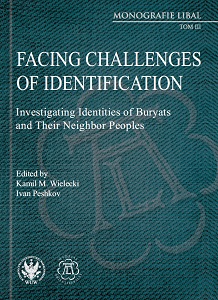Alternative History: Creation, Use and Interpretation of Buryat Genealogies
Alternative History: Creation, Use and Interpretation of Buryat Genealogies
Author(s): Ayur Zhanaev
Subject(s): Anthropology, Sociology, Cultural Anthropology / Ethnology
Published by: Wydawnictwa Uniwersytetu Warszawskiego
Keywords: genealogies; kinship; social order; history; elites
Summary/Abstract: Group identities are often built on genealogies. Buryat culture appears to conform to this general rule. Elaborate Buryat historical genealogies have been written and preserved. Today, scholars regard them as a key source of insight into the structure and character of Buryat society. Most scholars treat Buryat genealogies exclusively as descriptions of kinship systems. In keeping with a rich anthropological literature, Buryat culture appears to fit into the paradigm of kinship as the “irreducible principle,” “atom” or an “elementary structure,” which, as the complexity of society grew, ceased to be the central organizational principle in favor of the state, politics, economy, etc. However, this interpretation occludes the meaning of Buryat genealogies as carriers of historical memory and understanding of the world. By insisting on treating it in ethnographic categories, the academic view of Buryat culture reduces the Buryat society to the level of a primordial one. In this article, I will use the findings of my fieldwork to briefly introduce the historical context of the Buryat genealogies in the broadly defined pre-Soviet, Soviet and post-Soviet periods. I am interested in the motives of those who created these genealogies, and the place these documents occupy in the contemporary Buryat society and culture. I will also note the coincidence of a revival of interest among Buryats in their genealogies in the 1970s and 1980s with the rise of Soviet modernization’s power to suppress local cultures.
Book: Facing Challenges of Identification: Investigating Identities of Buryats and Their Neighbor Peoples
- Page Range: 79-98
- Page Count: 20
- Publication Year: 2020
- Language: English
- Content File-PDF

